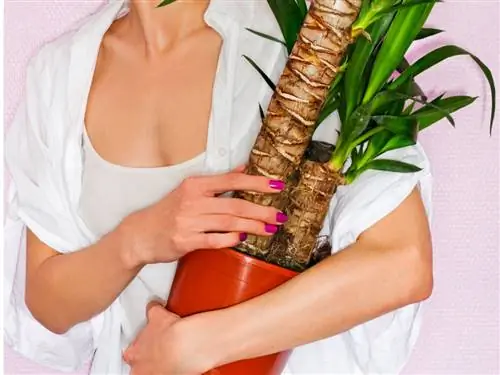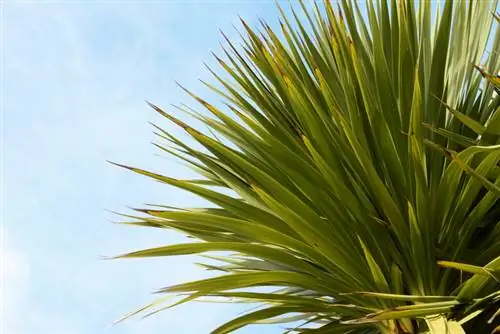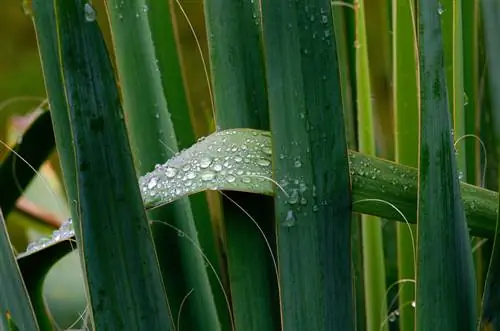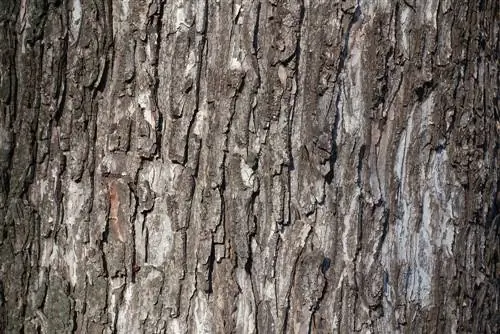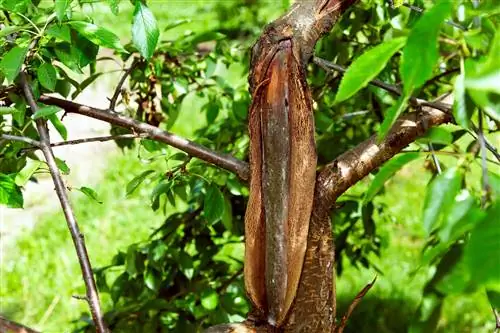- Author admin [email protected].
- Public 2023-12-16 16:46.
- Last modified 2025-01-23 11:21.
A thick, woody trunk and a lush head of broad, dark green leaves: the yucca is one of the most popular houseplants due to its exotic appearance. But that's not the only reason, because the agave plant (which is not remotely related to tropical palms!) is also considered very easy to care for. However, too much water can cause the plant to rot from the inside.

Why is the trunk of my yucca palm hollow and what can I do?
A hollow trunk on a yucca palm is caused by waterlogging and root rot caused by too frequent watering, lack of pot drainage or prolonged water stagnation. To save the plant, cut off he althy parts and root them in a sand-potting soil mixture.
Causes of hollow trunk
If the trunk feels soft, perhaps even can be squeezed with your fingers, or shoots that appear he althy on the outside simply snap off, then the part of the yucca in question is probably hollow. You can check this by inspecting a shoot more closely - for example if it has been snapped. Sometimes the trunk is not only hollow, but even rotten. This phenomenon is the gradual death of the plant due to root rot caused by waterlogging. This occurs when the Yucca, which is naturally used to dryness
- watering too often or too much
- there is no or insufficient pot drainage
- and/or the yucca has been left in excess water for too long (for example in a saucer).
The Yucca originally comes from the deserts and semi-deserts of the American state of Texas and parts of Mexico and is therefore adapted to a very dry and hot location. So don't be too wasteful with your watering.
Saving Hollow Trunk Yucca?
Once the yucca has a hollow trunk, it can no longer be saved completely - the rotting process has already progressed too far at this point. All you can do is try to cut off still he althy parts of the affected plant with a clean and sharp knife or saw and re-root them in a plant pot filled with a mixture of sand and potting soil. This shouldn't be a problem, as the yucca is one of the easiest houseplants to root - they basically can't be killed, as a cutting can still be taken from even the most severely affected plant. Suitable cuttings should be at least 10 centimeters long.
Tip
Rot is initially noticeable through rather inconspicuous symptoms such as yellowing of the leaves. If you notice such signs, you should act quickly - and replant the affected yucca in fresh, dry substrate after both above-ground and root pruning. Then water them significantly less often than before.

